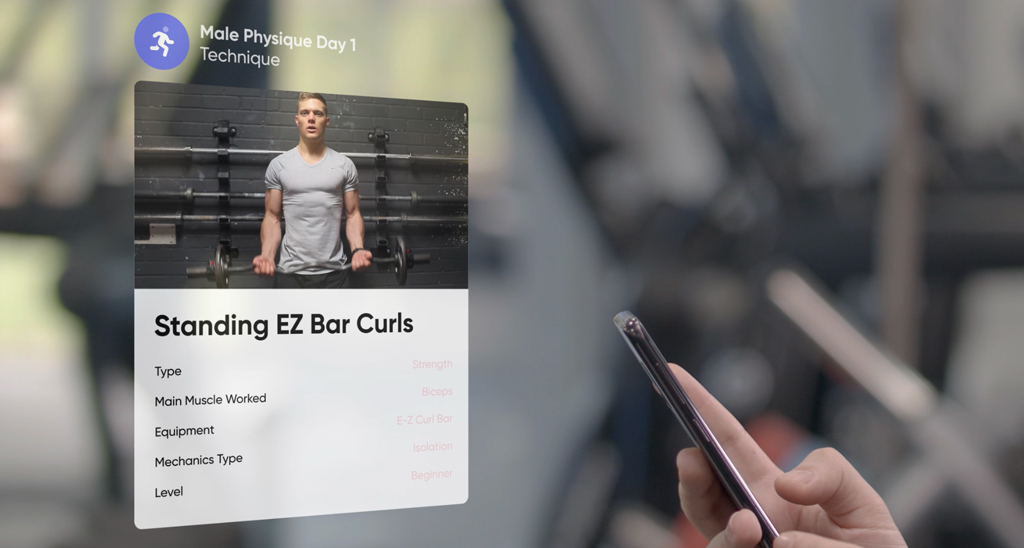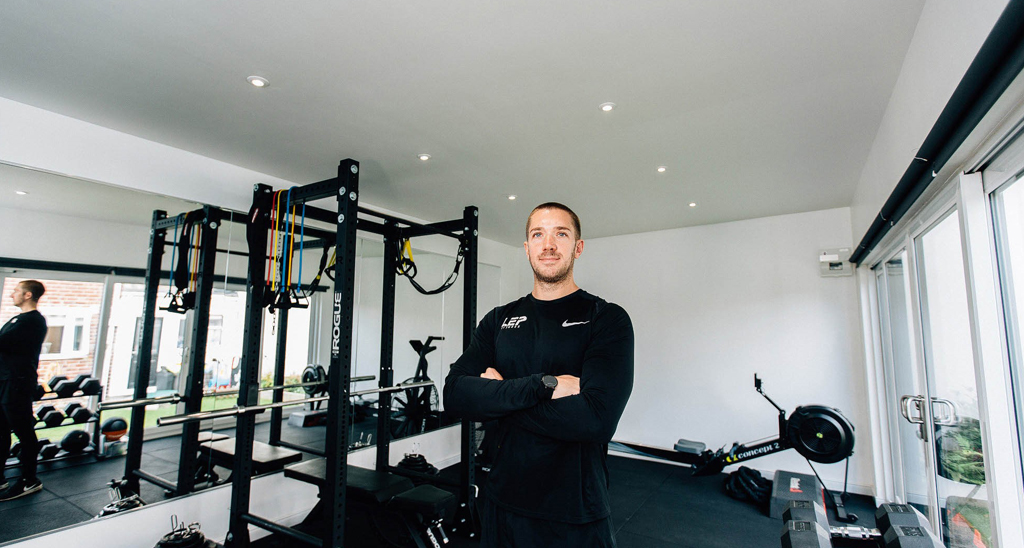Be in the Know
Elevate your industry knowledge with PT articles and insights crafted by experienced industry experts
Personal Trainers are the backbone of the health and fitness industry and if you were to walk into gym or health club, chances are personal trainers will be one of the first people you see and hear.
The role of a personal trainer is one of the most sought after in the fitness industry and there’s no shortage of people wanting to join this exciting and rewarding profession. Everyone who decides that becoming a personal trainer is definitely for them will have their own individual motivations and reasons for embarking on this journey. However, one of the most common motivations we hear from students working towards their personal training course is a burning desire to help people.
Traditionally, personal trainers have always worked exclusively from gyms, health clubs and leisure centres. However, more recently, the online space has exploded and so it’s now possible for trainers to work with their clients remotely from literally anywhere in the world. And we mean anywhere! We regularly speak to PT’s that work only online and who are providing remote programming and nutrition coaching for their clients from exotic spaces far and wide, including Dubai, Bali, Marbella and Sydney, to name a few.
Prior to the COVID-19 pandemic, the online personal training business was already booming and the coronavirus pandemic only served to accelerate this movement, giving many personal trainers with time on their hands during lockdown a welcomed boost.
If you’re a personal trainer thinking about taking your business online, then we’ll provide you with a balanced and honest appraisal of why you should do this (and why you maybe should not) and what you’ll need to consider in order to ensure your success.
With online personal training, the shackles are off and your clients no longer need to be tied to the membership base of a single gym or club, location or demographic. Being an online personal trainer is a much more varied and dynamic role in which you’ll ‘hypothetically’ be able to line your clients up back-to-back and safe yourself time and money travelling from one physical site to the next. The reason we say hypothetically is because to do this, you first need to be able to secure the clients, and this isn’t as easy as some may profess. But we’ll come back to this point later!

So, let’s’ summarise some of the key benefits of training clients online:
We’ll get back to the technology side of things shortly but it is fair to say that there are many ‘out of the box’ solutions that make the training and commerce side of online personal training a whole lot easier than it was only a few years ago. Sure, most of these solutions are subscription-based, but they’re designed for simplicity so even the most tech-averse people can quickly start to make real progress online.
Here are a few things to consider before making the jump…
Just because you never actually meet your clients in-person, doesn’t mean you don’t need to make the right impression, especially the first time you meet your client online. The online world is saturated with fitness influencers, personalities and self-styled coaches offering all kinds of workout and nutrition advice. To some extent, anyone can call themselves an online coach and the space has developed a bit of a reputation for low-value, high-throughput training where there is little emphasis on customer service. If you can impress upon your clients from the outset that you care, you’re keen to help and you’re committed to their success, it will go a long way.
Making sure your online customers know that you’re a qualified personal trainer that has met the professional standards to practice in the fitness industry is also really important in the online space. There are no shortage of people offering online coaching and training services and a good number of these (more than there should be) do so without a qualification to their name.
Unlike a gym or health club environment where a personal trainer would be required to supply evidence of their qualifications before they are appointed, the online space is largely unregulated. CIMSPA, UK Active, Skills Active or just about any other professional body has no jurisdiction on the web so people can say just about whatever they like. And they often do!
While it is true that most clients are capable of spotting bogus trainers that don’t have the right professional credentials to practice, and when they don’t, they soon learn once they start working using their services! To really succeed as an online PT, you’ll need to go up against these charlatans and by contrast, present your training services as a more credible, trustworthy and reliable alternative.
Talking about the importance of being qualified in the online space, HFE’s Managing Director, Lee Cain states:
There is a big difference between someone who has spent months and years studying their craft, developing a science-based understanding of nutrition, fitness and coaching, and somebody with no qualifications who just happens to be in good shape. Even worse, there are now a cohort of online trainers that have bought an unregulated personal training certificate online from a social media marketplace like Instagram and Facebook. What’s really worrying about these people is that they actually start to believe that they are qualified!
On face value, a potential online client may not immediately see the difference between yourself (a qualified personal trainer) and a so-called fitness influencer (with no formal qualifications). You have to represent the industry in the best possible light, ensuring you’re leading people down the right path – one backed up by evidence, science and principles. Principles are like fundamentals – they don’t change with fashion, styles or attitudes. it’s important to be clear about these, so you aren’t pulled away from what we know works! If you’re able to do this, your online clients will see the value of your services and understand that it’s a service worth paying for.
Online coaching is especially popular with physique-based services, like body transformation courses and services for example. In this scenario, clients are given very specific nutritional and training programmes to follow, often with little wiggle room when it comes to nutrition. These services are relatively easy to complete remotely and online, and clients like them because it makes them accountable for their daily and weekly actions.

Getting the right personal trainer insurance is an important fundamental you’ll want to ensure is in place before you start coaching people online. If you’re transitioning from the gym floor to online environment and already have insurance, then there is a possibility your existing policy won’t cover you to train clients online training so it’s important to check this with your insurance provider.
The likes of Insure4Sport and FitPro include online personal training as part of their standard policy and at no extra cost, but it’s not something you should leave to chance. Make sure you do your due diligence by asking your provider well in advance of taking any online clients.
In the fitness industry and specifically within personal training, there’s a lot of competition. As an online personal trainer, you’ll not only be competing with other online PT’s but those operating on the gym floor as well.
You’re going to need to stand out, bring something new to the conversation and that’s where having a USP, having a ‘why’ is important.
Being the cheapest or having the most social media followers doesn’t count, those things are transient. And not only that, most people know that you can buy those metrics in on Ebay if you’re inclined to do so.
You have to look deeper at what sets you apart, what’s your mission, what are your values… find the answer to these questions and make the focal point of everything you do. It may all seem a bit nebulous, your USP won’t immediately be something your clients can ‘see’ (with their eyes), but it is something they will ‘feel’ and experience.
It’s something that’s worked for the UK’s best personal trainers and there’s no reason it can’t work for you. Time and resources are always going to be finite – just because your personal training business is online, doesn’t mean you can suddenly do it all.
Trying to serve too many clients or too many clients with differing goals could potentially hamper your growth in the long term. To be the best at something, you have to stay in that spot and focus on it with laser-like precision until you’re better than the rest. One of the main reasons people might turn to the web for a PT is because they aren’t able to get the specialist support that they need from their gym-based trainer. Avoid being the ‘jack of all trades’ because we all know what he mastered!
If you do try to be all things to all people, you’re also running the risk of tarnishing your reputation or being the recipient of complaints if you’re spreading yourself too thin and not meeting your clients’ needs.
It’s not a prerequisite by any means but your niche could be an extension of your ‘why’. For example, if you’re a steadfast believer that exercise should as inclusive as possible, perhaps focusing on working within an exercise specialist role (older adults, pre and postnatal women and disabled clients) could be a path to follow.

Perhaps you want to help people recovery from injury or illness (cancer rehabilitation for example), or focus on body transformation or working with amateur athletes wanting to become professional. There are so many specific areas you could work in so it’s important to find something that aligns with your interests and strengths as a personal trainer.
This is perhaps the no-brainer part of this article, but standing out online and establishing a presence and a brand, takes a lot more than simply having a website and posting pictures on Instagram. What you do online and how you present yourself has to be impactful and meaningful.
Technology is your best friend in this regard and it’s something the likes of David Kingsbury and Scott Laidler have done exceptionally well.
Developing a slick online presence doesn’t always have to revolve around a website, although if your offering is multifaceted or complex, it certainly can help. There are many apps, including My PT Hub, Fitune, PTminder and others, that can do the heavy lifting for you, especially in the early days if you have budget constraints or a website isn’t something you initially feel comfortable managing. One key benefit of these third-party services is that they are laden with programming content that you can upcycle to serve your client’s needs.

In terms of specific techniques or channels to focus on, you should look to where your audience is. If you know body transformation and aesthetics appeal to your clients then choosing a visual medium like Instagram, for example, is the best place to showcase your brand (think before and after comparison photos).
Text-based marketing (newsletter, long-form articles or blogs) is going to be better suited to more complex topics or sensitive subjects like injury rehabilitation, mental health and nutrition. At first it might feel a little like trial and error, but eventually you will be able to zero in on the right messaging and utilise the right channels to grow your brand and online presence.
Online conduct is something that fitness professionals often forget about to their detriment and it really can be a brand killer. Everyone needs an outlet and we’re all entitled to blow off steam from time to time but your personal and professional lives should remain separate where possible. try to keep your political persuasions and personal thoughts to yourself, even if you have a different account you use for personal stuff. When you work online, the web is like your office, and you don’t want to create a damning digital footprint.
Just as you (hopefully) wouldn’t arrive at a gym hungover and bragging about last night’s revelries to your clients, the same mindset should be employed online. Clients, whether in person or online, are looking to you, the personal trainer, to be an inspiration and a role model. Use the best of your ability to keep things professional and on-brand online.
If you’re going down the route of using an existing app or platform to market your online PT services, this section might not be wholly applicable to you. For example, a service like My PT Hub comes built-in with a database of hundreds of exercises, complete with video demonstrations. You also have the option to record your own and truly create something bespoke for your clients.
For those personal trainers building something from the ground up, creating a library of content for your clients is certainly something to consider. What that content looks like will depend on what you’re offering. If workout plans are the focal point of your services, then filming a series of exercise demonstrations or tutorials is going to enhance the experience for your client. After all, you aren’t going to be there in person and they may not immediately be familiar with the exercises you’re suggesting they do.
Content creation is a key part of being an online personal trainer because it shows the world that you’re an authoritative figure, a professional who knows what they are talking about. Anyone can regurgitate third-party content on social media and post memes and motivational platitudes, but nothing says to the world ‘I AM AN EXPERT’ than creating killer content that is inspiring, technically accurate and useful.
In terms of what makes a good exercise demonstration, you could consider:
Environment – If you have your facilities of your own or home gym then great, you’ve got the perfect backdrop. If you don’t, consider getting permission to shoot your videos in someone else’s gym or studio space. It needs to look at professional as possible.
Sound – Providing you can record high-quality sound (and there’s no background noise), narrating the video and providing coaching points can bring the video to life. Alternatively, you could demonstrate the exercises without sound, the thinking being that clients will likely be in their local gym, listening to music so might not have the appetite to listen to your instruction.
Keep it short – Aim for a maximum of 30 seconds, but ideally 10-20. If you’ve given your clients five exercises to do, are they likely to have the patience to stand around watching a video that’s five minutes long per exercise? Demonstrate the exercise slowly at first, perhaps exaggerating the movement and then a couple of reps at full speed.
If you’re creating recipe cards or meal plans, these need to look like the real deal. No one’s expecting you to produce cookbook-quality photographs or descriptions, but simply sending out a Word document isn’t going to make the best impression. If you have the design skills and a decent smartphone camera, this will help bring them to life.

Alternatively, consider doing a bit of networking, there are plenty of online platforms out there that enable you to commission high-quality design work for a relatively inexpensive price.
As a fitness professional, it’s important to understand that you never stop learning. With that being said, here are a couple of established personal trainers who have successfully navigated the waters of online personal training. Let’s meet them…

Scott is an elite personal trainer who’s worked with Oscar-winning actors, musicians, TV personalities and thousands of everyday clients around the world. As well as running a successful online training business, he’s also the go-to expert for many publications and outlets including Esquire, Men’s Health, The Telegraph, Sky News, BBC, Women’s Health and The Sun.

Nick is a personal trainer from Sheffield. He founded LEP Fitness in 2012 and has completed over 12,000 1-1 coaching sessions. Alongside coaching, Nick loves reading and writing about health, fitness and human psychology.
We caught up with Nick and asked him a few questions about his online personal training experience.
Nick: Yes, I remember the first year of starting LEP Fitness in 2012, it was probably the most challenging year of my life. I struggled to get clients, especially for the first six months.
The first year was incredibly hard, and there were many days when I felt like giving up. I faced lots of setbacks and rejections – clients not turning up for consultations, people failing to pay, etc.
I kept going though, learning from mistakes, reading books to further my knowledge and asking for help from local business mentors. For every failure, there was a lesson and I learned a lot very quickly.
I now look back at the first year with fond memories because it enabled me to build resilience and character that has served me exceptionally well, not only in business but in other key areas of life.
Nick: Yes, I agree. There’s no need to pay for services with all of the free information out there. However, this works in our favour. People don’t need more information and content. They need to know how to apply it to their own lives. If I gave you a free meal plan, chances are you probably wouldn’t follow it. But, if you invested £200 on the plan, chances are you’re going to give it your full attention so you can get your money’s worth.
People need coaches to keep them accountable and that’s why cultivating a strong relationship is so important. An excellent personal trainer builds a positive and trustworthy relationship with clients. People don’t just want exercise and or meal plans to follow. They want a connection, to be heard, understood, and supported. This is where paid, personal training comes in.
Nick: Great question. The most crucial part of personal training is the ‘personal’ aspect.
When you do online coaching, it’s easy to lose this. Sending a client a meal plan and exercise program is one part of the puzzle, but you also need to focus on building a relationship with each client. You can do this in a couple of ways:
Leaving voice notes – just dropping your client a voice message each week can do wonders for their confidence. It will also increase your retention rates with clients. Most of my clients will stay with me for at least nine months, and 12 of my clients have been with me for 5+ years.
Zoom calls – scheduling a monthly face-to-face catch-up online is another excellent way to build rapport.
Extra resources – creating an exercise library and videos answering FAQs is another way to stand out from the crowd and create a personal touch.
Remembering personal information – being thoughtful, considerate and remembering small details such as your client’s favourite football team, names of their children, what they do for work, etc can all help build rapport. It’s the simple stuff that makes a huge difference. Invest in your clients, and they will invest in you. The PTs that do the best truly care about the people they work with.
If you’re looking for more insights, advice and ideas to help you grow as a PT, we’ve written some in-depth personal training career guides and articles, including pay and salary for personal trainers. They cover everything from qualifications, jobs, employment vs self-employment, insurance and more.
Back to articlesAnd get the fast-paced world of personal training delivered straight to your inbox every week
Great news, you're on the list...